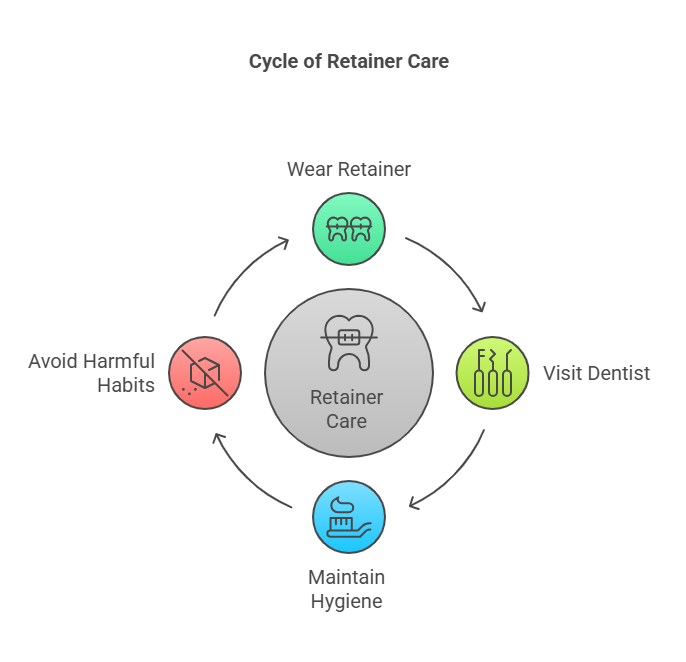Invisalign is a popular orthodontic treatment known for its convenience and effectiveness in straightening teeth. However, many patients wonder, “Do I need to visit the dentist during Invisalign treatment?” The short answer is yes. Regular dental visits are essential to ensure the treatment progresses as planned and to maintain overall oral health. This guide explores why dental checkups are crucial, how often they are needed, and what to expect during appointments.
Why Regular Dentist Visits Are Important During Invisalign Treatment
1. Monitoring Treatment Progress
- Your dentist will check that your teeth are shifting according to plan.
- Adjustments or refinements may be needed to ensure optimal results.
2. Preventing Oral Health Issues
- Invisalign trays must be worn on clean teeth to prevent cavities and gum disease.
- Dentists can identify early signs of dental issues and address them before they worsen.
3. Ensuring Proper Tray Fit and Comfort
- Ill-fitting aligners can hinder progress or cause discomfort.
- Your dentist may provide new aligners or modify existing ones if necessary.
4. Professional Cleanings
- Invisalign trays can trap bacteria, leading to plaque buildup.
- Regular cleanings help maintain fresh breath and healthy gums.
How Often Should You See the Dentist During Invisalign?
The frequency of visits varies based on individual treatment plans, but common recommendations include:
- Every 4 to 6 weeks: To check progress and receive new aligners.
- Every 6 months: Routine dental cleanings to prevent plaque buildup and cavities.
- As needed: If you experience discomfort, damage to trays, or other concerns.
What to Expect During Invisalign Checkups
During each visit, your dentist will:
- Assess tooth movement and alignment.
- Provide new aligners based on treatment progression.
- Address any discomfort or fitting issues.
- Perform a professional cleaning if necessary.
- Offer tips on maintaining aligners and oral hygiene.
Common Issues That Require Additional Dental Visits
Even with regular checkups, some issues may require immediate attention:
- Severe discomfort or pain – Could indicate misaligned trays.
- Cracked or lost aligners – Replacement trays may be needed.
- Cavities or gum inflammation – Requires prompt treatment to prevent delays.
- Slow or uneven tooth movement – Adjustments may be necessary.
10 “People Also Ask” Questions and Answers
1. Can I skip dentist visits while using Invisalign?
No, regular visits are essential for treatment success and oral health maintenance.
2. Do I need to see my orthodontist or regular dentist?
Both! Your orthodontist manages Invisalign treatment, while your dentist ensures oral health.
3. How do dentists check Invisalign progress?
They examine tooth movement and use digital scans to compare progress.
4. Can I get cavities with Invisalign?
Yes, if you don’t maintain proper oral hygiene, cavities can develop.
5. What happens if I lose an aligner before my next visit?
Contact your dentist or orthodontist immediately for a replacement.
6. Do I need X-rays during Invisalign treatment?
Occasionally, to ensure proper tooth and jaw alignment.
7. Can a dentist fix an Invisalign issue, or do I need an orthodontist?
Minor issues can be addressed by a dentist, but major concerns require an orthodontist.
8. How do I clean my Invisalign trays between visits?
Use Invisalign cleaning crystals or mild soap and lukewarm water.
9. Can I eat before a dental visit during Invisalign?
Yes, but brush your teeth before your appointment.
10. What if I miss a scheduled Invisalign checkup?
Reschedule as soon as possible to avoid treatment delays.
10 Frequently Asked Questions (FAQs)
1. Do I need dental cleanings during Invisalign treatment?
Yes, professional cleanings prevent plaque buildup and keep your teeth healthy.
2. Can I switch Invisalign aligners without a dental visit?
Only follow your dentist’s instructions—skipping visits may disrupt progress.
3. What if my aligners feel too tight at my dental visit?
Your dentist will check the fit and may provide solutions like refinements.
4. How do I know if my Invisalign treatment is on track?
Regular dental visits ensure your progress aligns with your treatment plan.
5. Do I need a retainer after Invisalign?
Yes, retainers help maintain your new smile and prevent shifting.
6. Can I see any dentist for Invisalign checkups?
Preferably visit a provider experienced in Invisalign treatment.
7. What if my Invisalign trays cause gum irritation?
Your dentist can smooth the edges or recommend adjustments.
8. Do I need to bring my previous aligners to checkups?
It can help your dentist assess any fitting issues or misalignments.
9. Can I wear Invisalign longer between visits to avoid checkups?
No, skipping appointments may lead to improper alignment.
10. Is Invisalign treatment faster with frequent dentist visits?
Regular visits help ensure smooth progression, avoiding delays.
Conclusion
Visiting the dentist regularly during Invisalign treatment is essential for ensuring progress, addressing issues, and maintaining oral health. Skipping checkups can delay your results and lead to complications. If you’re undergoing Invisalign treatment, stick to your scheduled appointments, follow proper oral hygiene, and consult your dentist if you experience any issues. If you are looking dentists near Weymouth MA, please visit Comfort Dental Weymouth, 47 Washington St, Weymouth, MA 02188, (781) 337-3300.































